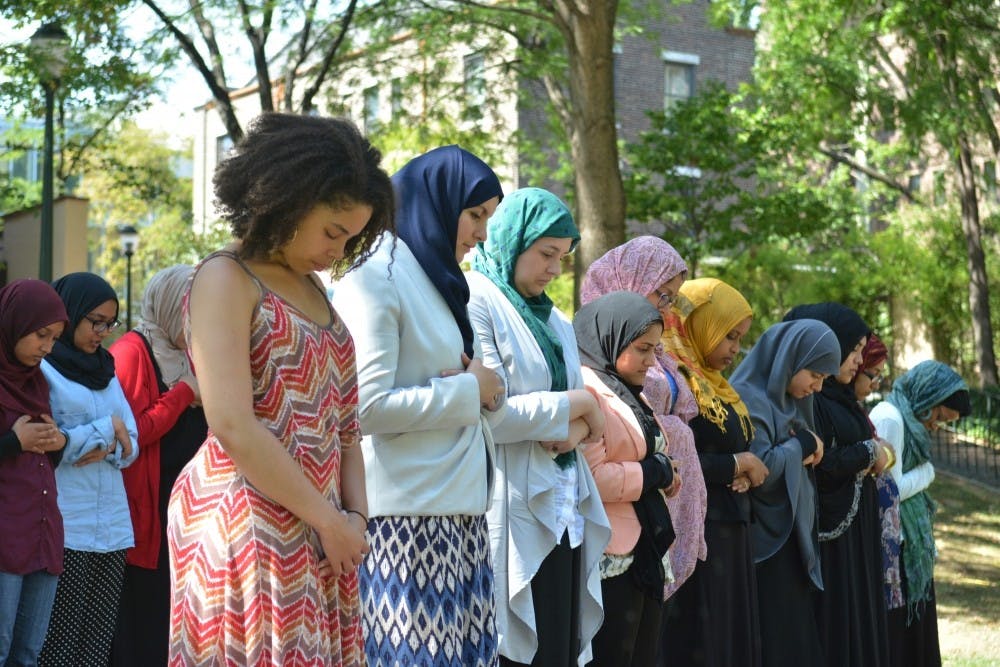
Muslim students pray on College Green.
Students gathered in Huntsman Hall on Thursday to dissect Islamophobia and its impact on women.
“Islamophobia is not the irrational fear of Muslims," College freshman Mona Hagmagid said. "The reason I say this is because an irrational fear of Muslims assumes that Islamophobia is something that is not thought out, something that isn’t informed, something that’s based in ignorance.”
Hagmagid and Penn Muslim Chaplain Patricia Anton both gave talks on the various ways Islamophobia influences Muslim women's lives. Organized by the Penn Association for Gender Equity, the Muslim Students Association and the Religious Studies Department as part of Women's Week, the event was followed by a question-and-answer session in which women who identified as Muslim were invited to the front of the room to talk about their relationships with Islam and personal experiences with Islamophobia, some of which involved incidents on Penn’s campus.
Much of the conversation revolved around the hijab, the headscarf worn by some Muslim women. Anton explained that one of the purposes of the hijab, like clothing in general, is to protect those who choose to wear it.
"It protects us from elements that can be harmful like sunburn and windburn … but it can also protect us from unwanted gazes, lustful looks, and it can protect us even from envy among women,” she said.
Anton discussed how Islamophobia can transform the hijab into something that invites danger because it identifies women as Muslim to those who would target them.
She turned to the audience and asked: “What do you do in that case? Do you take it off? Do you stay home and shun the public sphere? Do you hold on and wear your hijab, no matter what the consequences?"
Hagmagid pointed out that the origins of Islamophobia go back further than the time following 9/11.
"From the very beginning of this country, Islam has had a radically political meaning," she said, noting that 30 percent of enslaved West Africans brought to the United States were Muslim.
"It was a religion that offered enslaved men, women and children an opportunity to identify with a God that was outside of the dominant structure," she continued. "It allowed them to identify with a spirituality that did not rest in the hands of the slave owner of that plantation, and it allowed people to rally together and unite together.”
Hagmagid discussed how companies and political campaigns have used the hijab to further their own purposes, mentioning a CoverGirl ad, Hillary Clinton's presidential campaign and the recently-released Nike hijab as examples.
College freshman Phil Tedros, who attended the discussion, described the talk as eye-opening, noting that he had not considered that companies marketing to Muslim women could be more a result of economic goals than inclusion.
During the question-and-answer session, Muslim women shared instances of Islamophobia in their lives. One student described having her hijab torn off by a co-worker. Another student shared that, following the March 2016 terrorist attack in Brussels, a man hit her in the face with his bag while passing her on Locust Walk.
One student who had not experienced what she called "overt" Islamophobia said that, in light of the frequency with which some of her peers had been targeted, the thought of potential aggression was anxiety-inducing.
The Daily Pennsylvanian is an independent, student-run newspaper. Please consider making a donation to support the coverage that shapes the University. Your generosity ensures a future of strong journalism at Penn.
Donate




